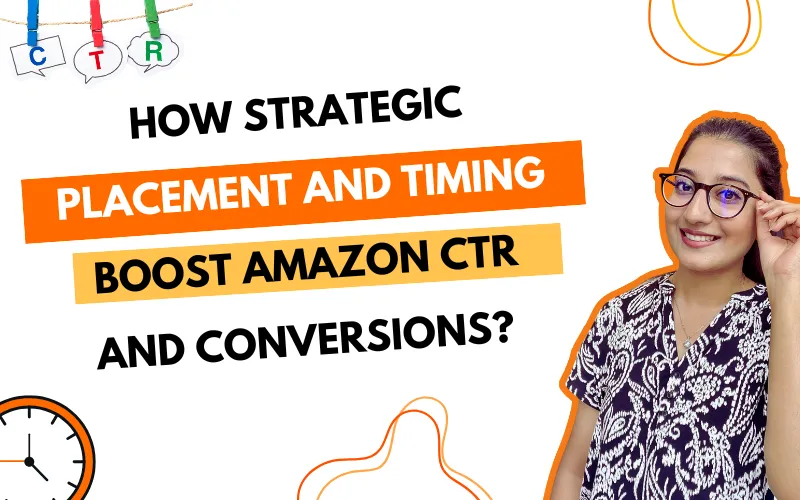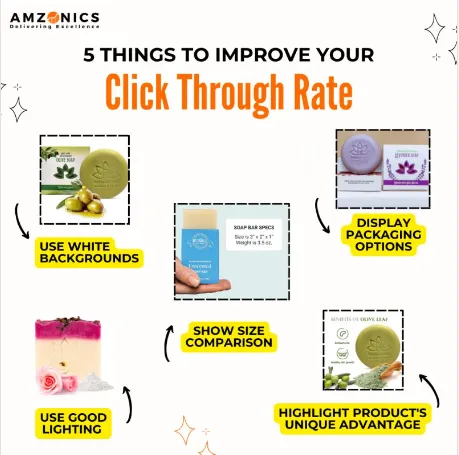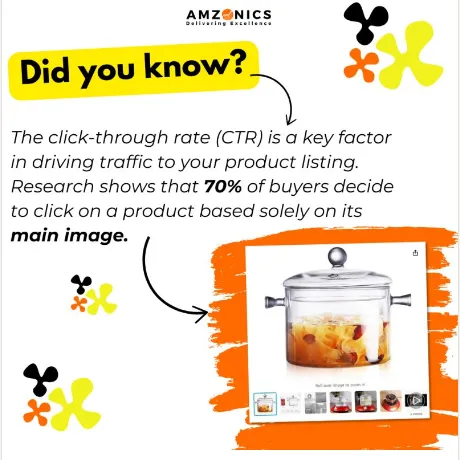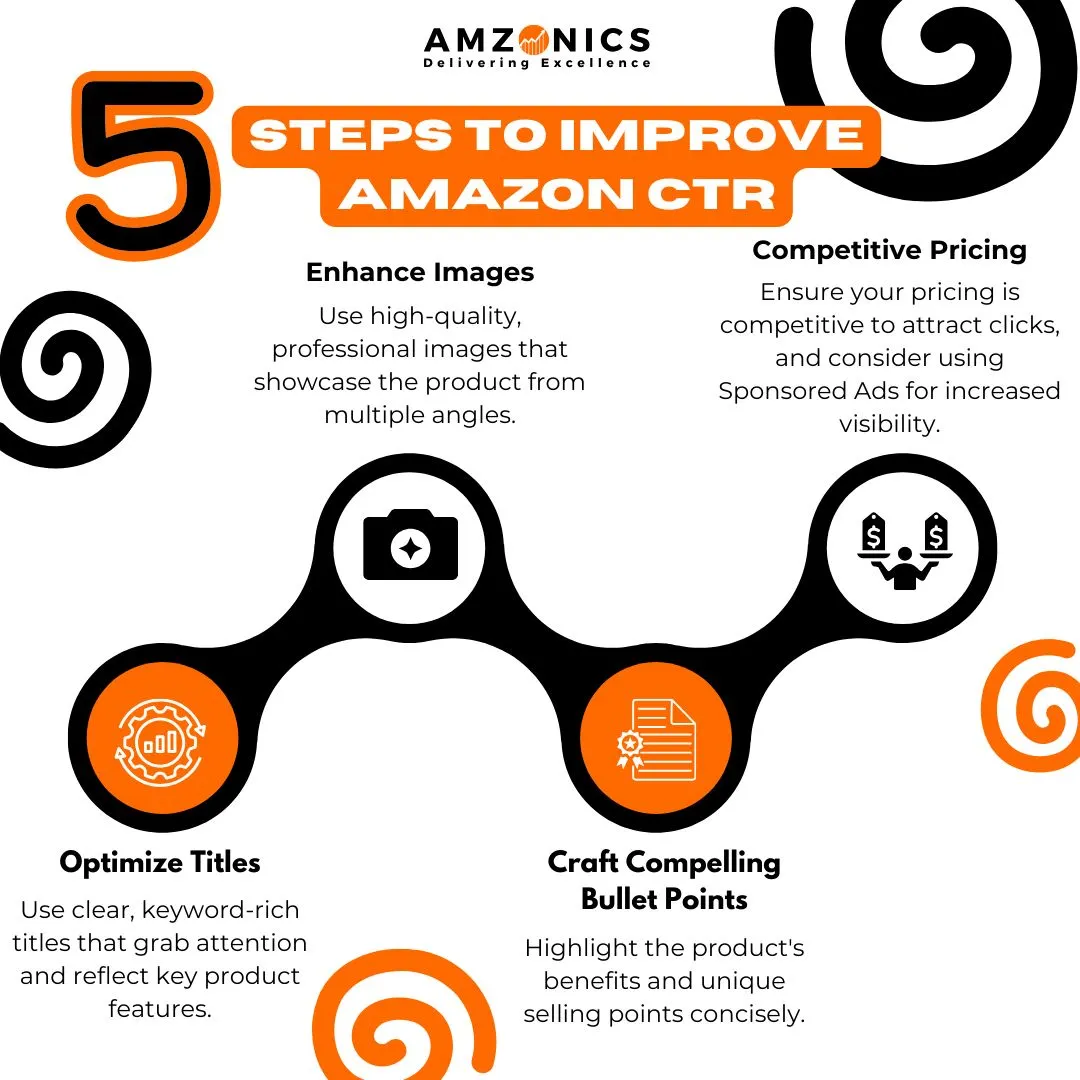How Strategic Placement and Timing Boost Amazon CTR and Conversions?

Amazon’s competitive marketplace means sellers must go beyond simple keywords to capture customer attention and drive Click-Through Rates (CTR). Two advanced tactics—strategic placement and effective timing—play essential roles in enhancing CTR, helping sellers not only attract more clicks but also improve conversions. This article explores how optimizing placement, and timing can transform your Amazon ad performance.
Understanding the Importance of Placement in Amazon Ads
Placement significantly influences ad visibility and click ability. Amazon offers several ad placements, each with unique characteristics and CTR potential:
Placement Types and Their CTR Impact: Amazon placements generally fall into three main categories: Top of Search, Product Pages, and Rest of Search. The Top of Search typically generates the highest CTR, as it appears prominently in search results. Product Pages placements are ads displayed on other product listings, which are often ideal for competitive products and provide significant visibility. Rest of Search appears lower in search results and can still attract traffic, especially for budget-conscious campaigns.
CTR Optimization by Placement Type: Each placement type serves specific goals. For example, “Top of Search” is beneficial for high-intent keywords, drawing buyers who are ready to click and purchase. On the other hand, “Product Pages” placement can help brands attract customers who are exploring alternatives on competitor listings. Knowing where to place ads based on your target customers’ behavior is key to optimizing CTR.
2. Advanced Placement Tactics to Boost Amazon CTR
Once you understand Amazon’s placements, leveraging bid adjustments and testing strategies can maximize your CTR:
Bid Adjustments for Strategic Placement Control: Amazon allows bid multipliers for controlling ad placements in specific areas. For instance, setting a higher bid multiplier for “Top of Search” can prioritize high-CTR placements, increasing the likelihood of clicks from customers browsing at the top of the results. For budget management, focusing on placements that yield the best CTR can maximize the return on your ad spend.
Dynamic Placement Testing: Running A/B tests across different placements allows you to evaluate which placements deliver the best CTR for your product. For example, if you’re advertising during a high-traffic period, consider allocating a larger portion of your budget to test “Product Pages” versus “Top of Search.” Data-driven adjustments based on test results can significantly improve overall campaign performance.
Identifying High-Performance Placements by Seasonality: Placement effectiveness can vary with the time of year. “Top of Search” might perform exceptionally well during high-traffic seasons like Q4, while “Product Pages” may offer better results during less competitive months. Monitoring seasonal CTR changes helps you reallocate resources to placements that maximize visibility and clicks during peak times.
3. Timing Strategies to Optimize Ad Visibility and Engagement

Understanding when your audience is most active on Amazon is critical for maximizing ad effectiveness. Timing strategies, like dayparting, allow you to align ad schedules with customer browsing behavior for optimal CTR.
Peak Shopping Hours and Dayparting: Many sellers overlook the importance of peak shopping hours. By analyzing data on customer activity, you can schedule your ads to run during hours of peak engagement, typically evenings and weekends for some categories. Dayparting allows you to focus your budget on the most active times, improving your ads’ visibility and CTR when potential buyers are most likely to click.
Leveraging Seasonal and Holiday Timing: Holidays and shopping events like Black Friday or Prime Day bring a surge in traffic. Adjusting ad bids and placements specifically for these periods can drive higher CTR. Consider planning promotions that align with seasonal trends to draw shoppers in. Prominently showcasing deals or limited-time offers can further enhance CTR during these high-traffic times.
Ad Scheduling for Maximizing Budget Allocation: Ad scheduling enables you to make the most of your ad budget. Instead of running ads 24/7, you can allocate more budget to peak hours or seasonal events, reducing wasted spend during low-traffic times. This approach can also help avoid excessive competition in crowded time slots while maintaining high CTR during active shopping periods.
4. Using Audience Insights to Enhance Timing and Placement
Audience insights provide valuable data for fine-tuning both ad placement and timing. By analyzing customer behavior, you can align your ads with specific shopper preferences.
Analyzing Customer Data: Demographic and shopping behavior insights allow for highly targeted ad strategies. Amazon Brand Analytics can reveal where your audience is most active and when, helping you align ad placements to their browsing habits. If your data shows a strong presence of mobile users during the evening, scheduling more ads at this time could yield better CTR.
Aligning Placement with Customer Purchase Behavior: Not all placements attract the same customers. For example, younger customers may browse product listings on mobile, where “Top of Search” is more visible, while older shoppers might scroll through “Product Pages” on desktop. Understanding your audience’s browsing and purchasing habits can help position your ads where they’ll see them most.
Seasonal and Demographic Trends: Audience preferences change seasonally and across demographics. Incorporating data on which product categories trend during specific seasons and targeting placements accordingly can optimize CTR. Younger audiences, for instance, may prefer deals featured on “Top of Search,” while budget-conscious shoppers may be more inclined to explore “Product Pages” placements for comparisons.

5. Monitoring and Analyzing CTR Data for Placement and Timing
A data-driven approach is essential to refine your timing and placement strategy. Amazon offers multiple tools to track CTR performance across placements and periods.
- Leveraging Amazon’s Placement Performance Report: Amazon’s reporting tools allow you to analyze placement-specific data, tracking CTR and conversion rates across “Top of Search,” “Product Pages,” and other placements. Reviewing this data regularly can help you identify underperforming placements, reallocate budgets, and maximize CTR for high-performing segments.
- Utilizing Amazon Attribution and Brand Metrics: Tools like Amazon Attribution allow you to track the impact of off-Amazon advertising efforts, revealing insights into which placements drive engagement based on customer behavior outside the Amazon platform. Combining these insights with Brand Metrics provides a holistic view of how timing adjustments and placement affect CTR and conversions.
- Setting CTR Benchmarks and Testing Regularly: Establishing benchmarks for each placement’s CTR helps measure success effectively. Testing should be an ongoing process: periodically A/B test different placements, bid multipliers, and timing adjustments to determine which factors yield the best CTR over time. Continual optimization allows you to stay competitive in Amazon’s dynamic marketplace.

Conclusion
Amazon’s advanced sellers know that to optimize CTR effectively, it’s essential to focus on strategic placement and timing tactics. By leveraging bid multipliers, adjusting timing for peak hours, and analyzing customer data, you can boost CTR and, in turn, increase conversions. Remember, Amazon’s marketplace is always evolving, and continually analyzing your timing and placement strategies will help you stay ahead. Start using these tactics today to maximize the value of your ad spend and drive better performance for your listings.
